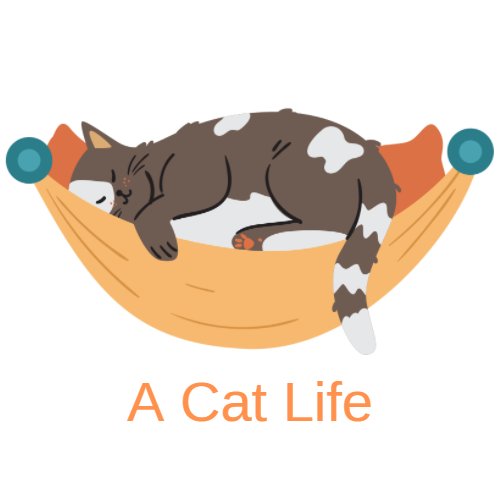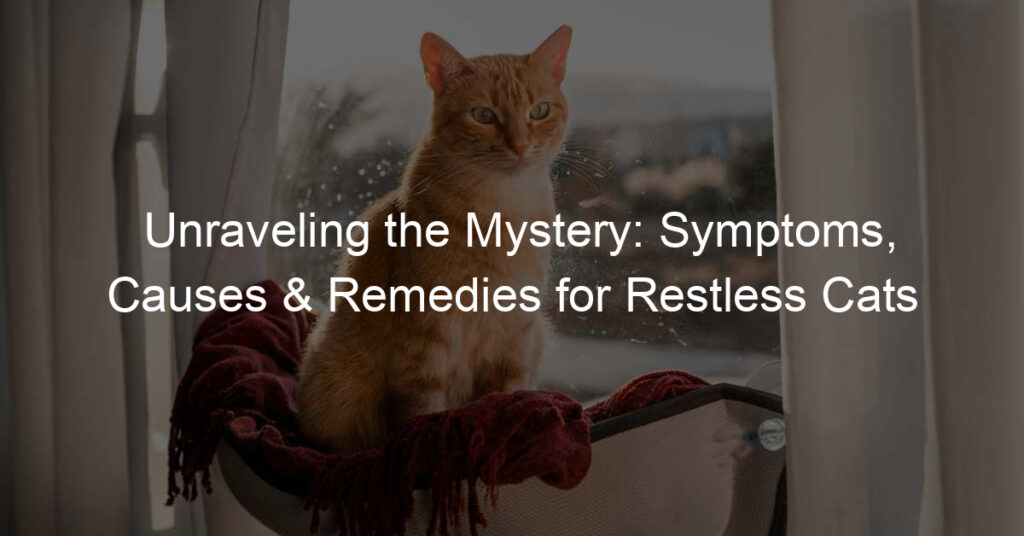
Introduction: Understanding Your Cat’s Love Language
Have you ever wondered why your cat rubs against your leg, or why it purrs when you pet it? These are all part of your cat’s unique love language. Understanding this language is crucial for building a strong and loving relationship with your feline friend. In this blog post, we will explore the importance of understanding cat behavior and provide an overview of feline love languages.
- Importance of Understanding Cat Behavior
Understanding your cat’s behavior is more than just a fun fact. It’s a key part of being a responsible and caring cat owner. Cats, like humans, have their own ways of expressing their feelings. They use a variety of signals and behaviors to communicate with us. By understanding these behaviors, we can better meet their needs and strengthen our bond with them.
For example, a cat that is wagging its tail may not be happy, as is often the case with dogs. In fact, this could be a sign that your cat is annoyed or upset. By understanding this, you can avoid causing your cat unnecessary stress and improve its overall well-being.
- Overview of Feline Love Languages
Cats express their love in a variety of ways, often referred to as their ‘love languages’. These can include purring, kneading, rubbing against you, and even bringing you gifts (like a mouse or bird they’ve caught). Each cat is unique, so their love language may differ from one to another.
For instance, some cats may show their affection by curling up in your lap and purring, while others may prefer to show their love by gently headbutting you. Understanding these love languages can help you better appreciate the ways your cat is trying to express its affection for you.
In the following sections, we will delve deeper into these love languages, and provide practical tips on how to show your love to your cat in a way they understand and appreciate.
Expressing Affection to Cats: The Basics
Understanding how to express affection to your feline friend is crucial in building a strong and loving relationship. Cats, unlike dogs, have their unique ways of showing and receiving love. Let’s delve into some of the basic signs of cat affection and how you can interpret them.
Understanding Cat Affection Signs
Cats communicate their feelings through various signs. Recognizing these signs can help you understand your cat better and respond to their needs effectively. Here are some common signs of cat affection:
- Recognizing purring as a sign of contentment
- Interpreting tail movements
- Understanding the meaning of slow blinking
When a cat purrs, it’s usually a sign of contentment. Cats often purr when they’re relaxed or happy, such as when they’re being petted or resting comfortably. However, remember that cats may also purr when they’re stressed or unwell, so it’s essential to observe other signs and understand the context.
Cats use their tails to express a variety of emotions. A high, straight-up tail usually indicates happiness and confidence, while a low or tucked tail can signify fear or submission. A wagging or twitching tail, on the other hand, often means that the cat is agitated or excited.
Slow blinking is often referred to as ‘cat kisses.’ When a cat looks at you and slowly blinks, it’s a sign of trust and affection. You can return this gesture by slowly blinking back at your cat, which can help strengthen your bond.
Understanding these signs of affection can help you communicate more effectively with your cat and build a deeper, more loving relationship. Remember, every cat is unique, and what works for one might not work for another. The key is to be patient, observant, and responsive to your cat’s needs and behaviors.
Ways to Love Your Cat: Cat Bonding Techniques
Building a strong bond with your cat is not just about petting and cuddling. It involves understanding their needs and providing them with a nurturing environment. Here are some practical ways to show love to your feline friend:
- Providing a Safe and Comfortable Environment
Just like humans, cats need a safe and comfortable environment to thrive. This includes a clean litter box, cozy sleeping areas, and access to fresh water and food. Make sure to keep dangerous items, like chemicals and small objects that can be swallowed, out of their reach.
- Playing with Your Cat Regularly
Cats are playful creatures. Regular play sessions not only keep them physically active, but also mentally stimulated. Use toys that mimic their natural hunting behaviors, like feather wands or laser pointers. Remember, playtime is also a great bonding opportunity!
- Grooming Your Cat
Most cats are self-groomers, but they still benefit from regular brushing. This helps to keep their coat clean and reduces the risk of hairballs. Plus, grooming is a wonderful way to show affection and build trust with your cat.
- Feeding Your Cat a Balanced Diet
Proper nutrition is crucial for your cat’s overall health. Feed them a balanced diet that’s appropriate for their age, size, and health status. Avoid overfeeding as it can lead to obesity and other health problems. Remember, a healthy cat is a happy cat!
In conclusion, loving your cat involves more than just petting them. It’s about creating a nurturing environment, engaging in regular play sessions, grooming them, and providing a balanced diet. By following these techniques, you can build a strong bond with your cat and ensure they live a happy and healthy life.
Cat Communication Methods: Interacting with Your Cat
Communication is the key to any successful relationship, and this includes the bond you share with your furry friend. Cats communicate in various ways, and understanding these methods can significantly enhance your interaction with them.
Verbal Communication
Cats are known for their distinctive vocalizations. They use a variety of sounds to express their needs, feelings, and desires. Let’s delve into the world of cat vocalizations.
- Understanding different types of meows
- Responding to your cat’s vocalizations
Cats have a diverse range of meows, each with its unique meaning. A short, high-pitched meow often signifies a friendly greeting, while a drawn-out, low-pitched meow might indicate discomfort or displeasure. Kittens typically have a high-pitched, rapid meow to call for their mother’s attention. Adult cats, on the other hand, use a more varied range of sounds to communicate with humans.
Once you understand the different types of meows, it’s crucial to respond appropriately. If your cat gives a friendly meow, a gentle pet or a kind word can show that you acknowledge their greeting. If the meow seems to indicate distress, it’s important to check if they need food, water, or medical attention. Remember, your response to your cat’s vocalizations helps build trust and understanding between you and your feline friend.
Understanding and responding to your cat’s verbal cues is a significant step towards building a strong bond with them. It allows you to meet their needs promptly and shows them that they can trust you. So, the next time your cat meows, listen closely. They might be trying to tell you something important.
Non-Verbal Communication
While cats may not speak our language, they have a rich non-verbal communication system that they use to express their feelings and intentions. By understanding this language, you can better interact with your cat and build a stronger bond.
- Reading your cat’s body language
Cats use their bodies to communicate a wide range of emotions and intentions. For instance, a cat with a straight, upright tail is usually content and relaxed. On the other hand, a cat with a puffed-up tail is likely feeling threatened or scared.
Similarly, a cat that is lying on its back with its belly exposed is showing trust and contentment. However, a cat that is crouched low to the ground with its tail tucked in is likely feeling anxious or scared.
It’s important to remember that each cat is unique, and what might be a sign of happiness in one cat could be a sign of distress in another. Therefore, it’s crucial to get to know your cat’s individual body language cues.
- Understanding your cat’s facial expressions
Cats also use their facial expressions to communicate. For example, a cat with wide, dilated pupils may be excited or scared, while a cat with narrow pupils may be angry or aggressive.
Similarly, a cat that is blinking slowly at you is showing trust and affection. This is often referred to as a “cat kiss” and is a high compliment in the feline world.
Again, it’s important to remember that each cat is unique, and their facial expressions can vary. Spend time observing your cat to understand their specific facial cues.
In conclusion, understanding your cat’s non-verbal communication can greatly enhance your relationship with them. It allows you to respond to their needs more effectively and build a stronger bond based on mutual understanding and respect.
Showing Love to Your Cat: Practical Tips
Showing love to your cat is more than just petting and cuddling. It’s about understanding and respecting their boundaries. Here are some practical tips to help you show your feline friend how much you care.
Respecting Your Cat’s Boundaries
Every cat is unique and has its own set of boundaries. Respecting these boundaries is a crucial part of showing your cat love and building a strong bond. Here are some ways you can respect your cat’s boundaries:
- Allowing your cat to initiate contact: Cats are independent creatures. They like to be in control of their interactions. So, let your cat decide when it’s time for cuddles or play. This shows your cat that you respect their space and are patient.
- Understanding signs of discomfort or stress: Cats communicate their feelings through body language. If your cat’s tail is puffed up, or they’re hissing, these could be signs of stress or discomfort. It’s important to recognize these signs and give your cat some space. This shows your cat that you understand and respect their feelings.
Remember, showing love to your cat isn’t just about giving them treats or petting them. It’s about understanding and respecting their boundaries. This not only helps build a strong bond but also makes your cat feel safe and loved.
Creating a Cat-Friendly Environment
Creating a cat-friendly environment is an essential part of showing love to your feline friend. This involves providing necessary items and ensuring a clean and healthy environment. Here are some practical tips:
- Providing Scratching Posts and Toys
- Ensuring Access to Clean Water and a Clean Litter Box
Cats have a natural instinct to scratch. It helps them to keep their claws sharp, mark their territory, and stretch their muscles. Providing scratching posts can save your furniture from their claws. Additionally, toys keep cats entertained and provide them with the necessary exercise. A study by the University of Bristol found that cats with access to toys are less likely to exhibit behavioral problems.
Hydration is crucial for your cat’s health. Always ensure that your cat has access to fresh and clean water. Change the water daily and clean the bowl regularly to prevent the growth of bacteria. Similarly, a clean litter box is essential for your cat’s hygiene. Cats are naturally clean animals and a dirty litter box can lead to them refusing to use it. According to the American Veterinary Medical Association, it’s recommended to scoop the litter box daily and to clean it with warm soapy water every week.
In conclusion, creating a cat-friendly environment is not just about providing comfort but also about ensuring the health and well-being of your cat. By providing scratching posts and toys, and ensuring access to clean water and a clean litter box, you are showing love to your cat in a practical and effective way.
Conclusion: Building a Loving Relationship with Your Cat
As we conclude, it’s important to remember that building a loving relationship with your cat is a journey, not a destination. It requires understanding, patience, and consistency. Let’s recap some of the key takeaways from our discussion.
- Recap of key takeaways:
- Importance of patience and consistency:
Firstly, understanding your cat’s love language is crucial. Every cat is unique and expresses affection in different ways. We’ve learned that cats communicate through body language, vocalizations, and even their purring. By paying attention to these signs, you can better understand your cat’s feelings and needs.
Secondly, expressing affection to your cat should be done in a way that they understand and appreciate. This could be through gentle petting, playing with them, or simply spending quality time together. Remember, forcing your cat to show affection can lead to stress and anxiety.
Finally, consistency is key. Cats are creatures of habit and they appreciate routine. Consistently showing love and affection will help build trust and strengthen your bond with your cat.
Building a loving relationship with your cat doesn’t happen overnight. It requires patience and consistency. Cats can be independent and aloof at times, but with consistent positive interactions, they will learn to trust and love you.
Patience is especially important when introducing new behaviors or routines. Cats may resist change at first, but with patience and positive reinforcement, they can learn to adapt and even enjoy new experiences.
In conclusion, building a loving relationship with your cat is a rewarding experience. It requires understanding, patience, and consistency, but the result is a bond that is truly special. Remember, every cat is unique, so take the time to understand your cat’s unique love language and express your affection in a way that they appreciate.








